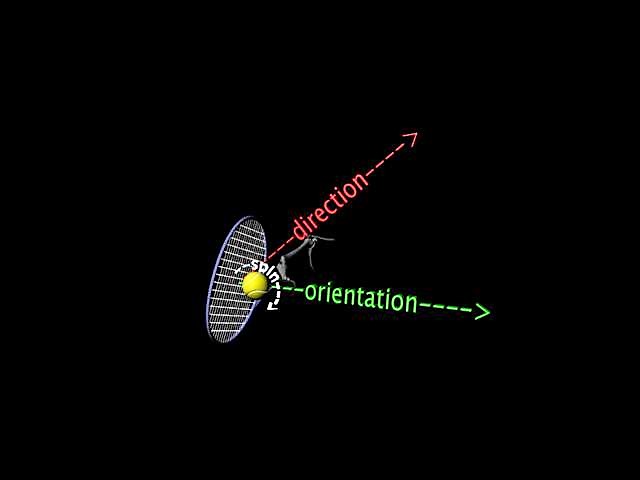Real Life Physics of Tennis
I have attempted to read a lot of books and articles titled "The Physics of Tennis." I like reading physics and math books in bed because they put me to sleep almost immediately. Please understand that I have always loved physics. I wanted to be a physicist until I discovered during my freshman year in college in 1972 that as a result of the hippies convincing the country to dismantle NASA and the military-industrial complex that physicists were mowing lawns to live. That, and there probably isn't enough caffeine in the world to get me through earning a Ph.D. in physics. I tell you this because I do not intend to bore you with any esoteric discussions of how the ball and strings deform at the moment of contact resulting in non-elastic blah, blah, blah. That doesn't help you to enjoy the game. Mostly this page is designed to support some of the outlandish claims made elsewhere in the site. I am not even going to support my assertions with references. If you doubt any of the concepts I refer to you can look them up yourself. Sleep tight!
A (Very Brief) Intro to Physics
Physics is the study of things that move. Things that move have kinetic energy. Their energy can be used to do work, like moving electrons in a motor that is lifting an elevator against gravity. A gallon of gasoline can also be used to do work, but it doesn't move. It has potential energy.
Things that have mass and move also have momentum which is the ability to change how other things move. Momentum has direction - it is a creature of space. Energy has no direction - it is a creature of time.
To change an object's energy or momentum you must apply a force (push, pull, attract, repel etc.) No force - no change, everything would remain the same forever. You can't create momentum. You can only steal it from something else. When we hit a tennis ball, we must steal momentum from the earth and use it to change the ball's direction. (The earth changes its motion in a direction opposite that of the ball.) That means we have to push off on the earth before we hit the ball.
Forces acting on an object in opposite directions tend to cancel each other out. What is left over is a net force which can then accelerate the object. Hold a bowling ball in your hand, and you are pushing up an amount equal to the gravity pulling it down. Increase the force, and the ball accelerates up, decrease it, and the ball falls.
Things that aren't moving don't want to be moved. Once moving, they want to keep on moving in the same direction. We call that inertia.
Impulse
To change the direction of a ball we need to apply a force for a length of time. The longer the time or greater the force, the greater the change in the direction of the ball. The change of the balls flight path is in the direction of the applied force. A force applied for duration of time is called impulse.
When a moving racket meets a moving ball with no force applied there is a change in the direction of the ball, so there must be an impulse applied to the ball. This impulse comes from an exchange of momentum between the racket head and the ball. Because the racket head has more mass than the ball, the racket loses some velocity but doesn't change its speed or its direction, very much (velocity is speed in a given direction). The ball is light and therefore changes its velocity quite a bit, actually reversing one of its directions - the direction that is directly opposed by the racket. Its other velocity component, the one at right angles to the racket direction, is unchanged. Thus a ball that was coming in and down before impact will be traveling out and down after impact - perhaps directly into the base of the net. A non-accelerating racket meeting a moving ball is an example of an 'elastic collision.' An elastic collision occurs when you just swing at the ball or stick your racket out and let the ball hit it. Arranging an elastic collision between racket and ball gives you very little control over the direction of the ball after the strike. To control the ball you must inject impulse aimed only in the direction you want the ball to go.


